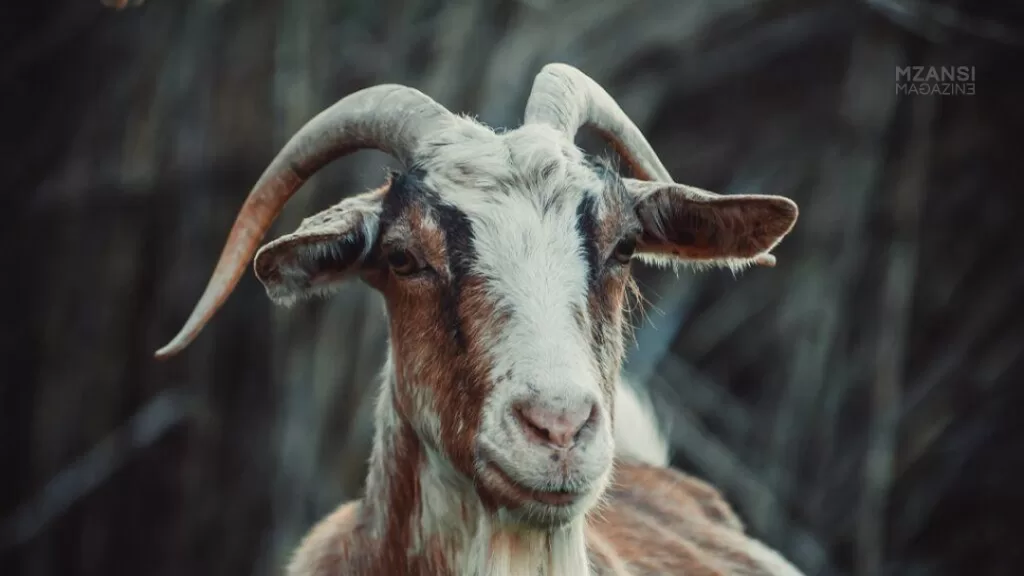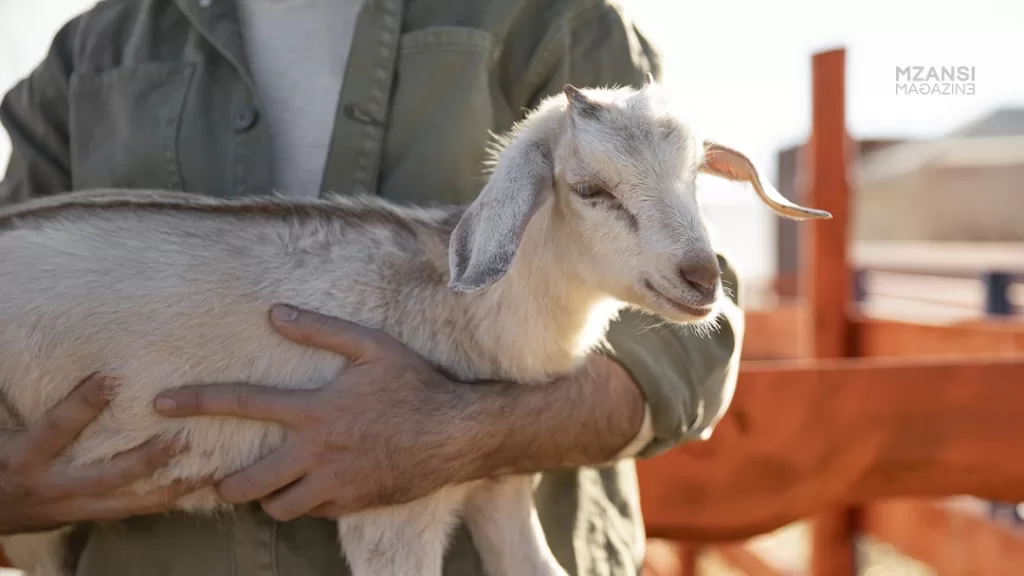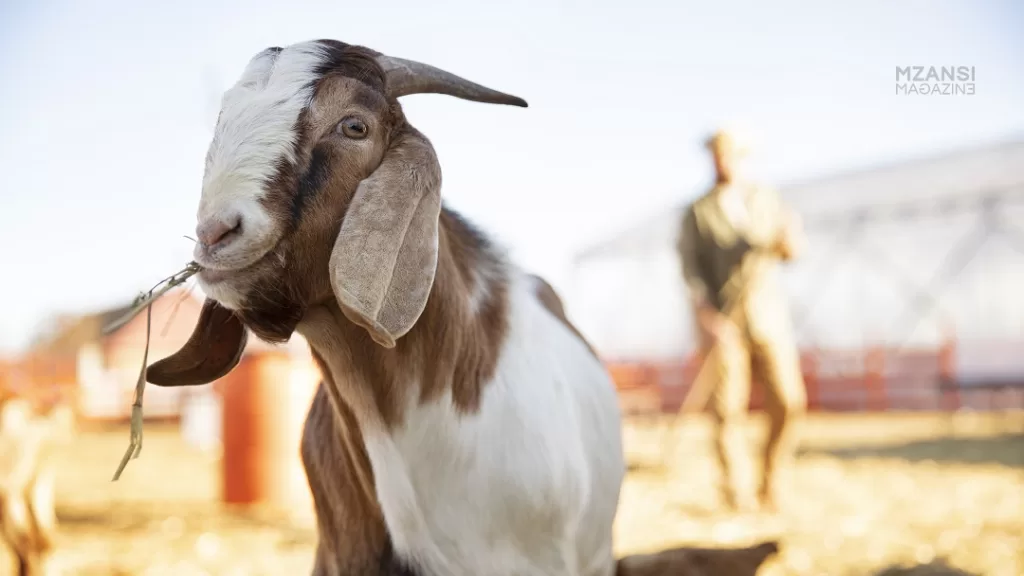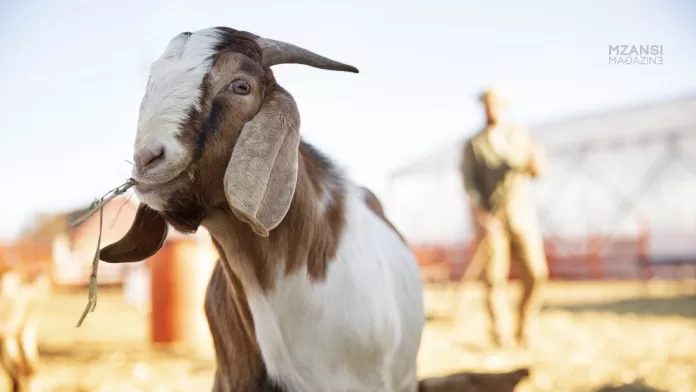Exploring the Rich World of Goat Farming in South Africa
Exploring the rich world of goat farming in South Africa unveils a tapestry woven with cultural heritage and agricultural prowess. Against the backdrop of the diverse South African landscape, where regions vary from the verdant Eastern Cape to the arid expanses of the Karoo, goat farming emerges as not merely a livelihood but a deeply ingrained cultural narrative.
Boer goats, with their distinctive white bodies and reddish-brown heads, stand out as the pride of South Africa, renowned for their adaptability and succulent meat. Beyond the allure of Boer goats, preserving indigenous breeds like the Nguni and the Savanna adds a layer of cultural significance, contributing to the region’s rich biodiversity.
Table of Contents
Establishing a connection with the land, goat farmers navigate challenges and opportunities, crafting a livelihood that harmonises with the environment. Setting up a goat farm involves more than infrastructure; it’s about creating a haven where goats thrive.
The article navigates the complexities of goat farming, from constructing suitable shelters to balancing nutrition. In doing so, it highlights the delicate dance between tradition and modernity, where the ancient art of goat farming adapts to the demands of a contemporary agricultural landscape.
As we delve into the intricacies of this age-old practice, it becomes clear that goat farming in South Africa is not just a venture; it’s a journey that intertwines culture, tradition, and the promise of a sustainable future.

Understanding the Terrain
Understanding the terrain is fundamental to the success of goat farming in South Africa, where the landscape unfolds as a patchwork of diverse regions. Each geographic setting, from the lush greenery of the Eastern Cape to the arid expanses of the Karoo, presents unique challenges and opportunities for goat farmers.
The geographical diversity influences the choice of goat breeds and shapes the strategies employed in nurturing a thriving herd. Boer goats, well-adapted to various conditions, become a focal point in regions where the terrain demands resilience and adaptability.
Meanwhile, the significance of indigenous breeds like the Nguni and the Savanna becomes pronounced, as their ability to navigate specific terrains contributes not just to the success of the farm but also to the preservation of South Africa’s cultural and agricultural heritage. In essence, understanding the terrain in South Africa goes beyond geographical awareness; it becomes a nuanced dance between the landscape, the goats, and the traditions that bind them.
The Diverse Regions of South Africa
The diverse regions of South Africa form a captivating backdrop to the intricate tapestry of goat farming, each area contributing its unique character to the agricultural narrative. One can’t help but be mesmerised by the verdant landscapes of the Eastern Cape, where rolling hills and abundant greenery create an idyllic setting for goat farming.
The Eastern Cape’s mild climate and ample grazing areas make it a favourable region for Boer goats, thriving on the nutritious vegetation. Contrastingly, the arid expanses of the Karoo region present a different challenge, demanding resilient goat breeds adapted to the harsh, dry conditions. Managing the challenges such diverse regions present highlights the adaptability and strategic thinking required for successful goat farming in South Africa.
South Africa‘s diverse regions offer distinct environments for goats, reflecting the country’s rich cultural diversity. The nuances of the terrain influence the choice of goat breeds and farming practices. Farmers navigate the intricacies of each region, crafting a sustainable and prosperous venture rooted in the essence of South African soil. From the picturesque coastal beauty of the Western Cape to the vast plains of the Free State, the artistry of goat farming unfolds in these varied landscapes.
Navigating the Goat Breeds: A Comprehensive Guide
Navigating the goat breeds in South Africa unveils a comprehensive guide as diverse as the nation’s cultural fabric. At the forefront of this exploration are the Boer goats, distinctive with white bodies and reddish-brown heads, standing as the pride of South African goat farming.
Renowned for their adaptability and superior meat quality, Boer goats dominate the landscape, offering a lucrative choice for farmers nationwide. However, the article delves deeper, shedding light on preserving indigenous breeds like the Nguni and the Savanna. Beyond contributing to biodiversity, these breeds hold cultural significance, representing a connection to South Africa’s rich heritage.
Navigating the intricate world of goat breeds becomes not just a practical consideration for farmers but a delicate balance between embracing modern agricultural practices and safeguarding the cultural roots embedded in the diverse genetics of South African goats.
Boer Goats: The Pride of South Africa
Boer goats emerge as South Africa’s pride, symbolising agricultural excellence and adaptability in the nation’s goat farming landscape. Characterised by their distinctive white bodies and reddish-brown heads, Boer goats have become synonymous with quality meat production and resilience in varying climatic conditions.
The article delves into the characteristics that make Boer goats a preferred choice for many South African farmers, highlighting their ability to thrive in diverse terrains, from the Eastern Cape’s lush pastures to the Karoo’s arid expanses. Boer goats, with their robust nature and efficient conversion of forage into high-quality meat, exemplify the pinnacle of goat farming success in South Africa.
Beyond their practical attributes, the article underscores the cultural and economic significance of Boer goats in South Africa. Boer goats have carved a niche in the agricultural sector and contributed to the nation’s export industry, showcasing the adaptability and appeal of South Africa’s goat farming practices on a global stage. The pride associated with Boer goats extends beyond their physical characteristics; it is a testament to the resilience and ingenuity of South African farmers who have embraced these remarkable animals as a cornerstone of their livelihoods and cultural heritage.

Indigenous Breeds: Preserving Heritage
In the tapestry of South African goat farming, the importance of indigenous breeds, such as the Nguni and the Savanna, emerges as a crucial thread in preserving the nation’s agricultural heritage. These breeds, rooted deeply in the cultural history of South Africa, are more than livestock; they represent a connection to the traditions and stories passed down through generations.
The article delves into the distinctive characteristics of these indigenous breeds, celebrating their resilience in navigating the diverse terrains of the country. The Nguni, with its distinctive hump and multicoloured coat, and the Savanna, known for its hardiness and adaptability, showcase the rich diversity that South Africa’s goat farming heritage embodies.
Beyond their cultural significance, the article sheds light on indigenous breeds’ role in maintaining biodiversity and genetic diversity within South Africa’s goat farming ecosystem. As the global agricultural landscape evolves, there is a growing recognition of the value these breeds bring in preserving cultural identity and contributing to the overall health and sustainability of the farming industry. The commitment to preserving and promoting indigenous breeds becomes a collective effort, bridging the past and the future of South Africa’s agricultural legacy.
Setting Up Your Goat Farm
Setting up your goat farm in South Africa involves more than just building structures; it requires laying the foundation for a thriving and sustainable venture. The article guides aspiring goat farmers through the crucial steps of establishing a thriving goat farm, emphasising the importance of creating an environment where goats can flourish. Each aspect is carefully considered, from constructing suitable shelters that provide security and comfort to ensuring ample grazing areas.
Goat farming is an intricate dance between infrastructure and the herd’s well-being, and the article navigates through this delicate balance. It sheds light on the necessity of proper planning, including factors such as water supply, fencing, and layout design, all tailored to the unique needs of the goats and the specific conditions of the chosen location. Aspiring goat farmers are encouraged to view their venture not just as a business but as a holistic commitment to providing a nurturing home for their goats to thrive and contribute to the rich agricultural tapestry of South Africa.
Infrastructure Matters: Building the Foundation
Infrastructure is a crucial aspect of goat farming in South Africa, as it forms the foundation for a successful and sustainable business. This article delves into the critical components of goat farm infrastructure, with a particular emphasis on constructing shelters that protect from harsh elements and a sense of security for the goats. It is essential to understand the diverse climates across South Africa, ranging from the humid coastal regions to the arid inland areas, to design structures that cater to the herd’s well-being. Proper ventilation, efficient drainage systems, and consideration of natural light are key factors in creating shelters that promote the health and comfort of the goats.
Beyond mere shelter, the article explores the significance of well-planned grazing areas in sustaining a flourishing goat farm. Efficiently utilising the available land, providing a balanced mix of forage, and ensuring easy access to water sources are integral components of establishing a goat-friendly environment.
The intricacies of infrastructure planning underscore the commitment required in goat farming, where thoughtful design contributes not only to the goats’ physical well-being but also to the overall efficiency and productivity of the farm. As goat farming weaves into the fabric of South African agriculture, a robust and well-thought-out infrastructure becomes the cornerstone of a successful and enduring venture.
Nutrition Essentials: A Balancing Act
Nutrition plays a pivotal role in the success of a goat farm in South Africa, and the article navigates the complexities of this essential aspect, highlighting the intricate balancing act involved in providing a well-rounded diet for the herd. Understanding the nutritional needs of goats, particularly in a region as diverse as South Africa, requires a nuanced approach.
From the protein-rich pastures of the Eastern Cape to the more arid landscapes of the Karoo, farmers must tailor their feeding strategies to ensure that their goats receive the necessary nutrients for optimal health and productivity. The article delves into the specifics of crafting a nutrition plan, considering factors such as the quality of forage, supplementation, and seasonal variations, offering practical insights for farmers to maintain a delicate equilibrium in their goats’ diet.
Meeting the herd’s nutritional requirements is crucial without compromise to run a thriving goat farm. The article highlights the significance of supplementing forage with necessary minerals and vitamins to address potential deficiencies in specific regions.
It also recommends a proactive approach to nutrition management, advising farmers to monitor their goats’ body condition, adjust feeding plans accordingly and seek veterinary guidance when required. In the diverse landscape of South African goat farming, where the terrain and climate vary significantly, nutrition plays a dynamic and responsive role, ensuring that goats can thrive and survive in their agricultural environment.
Nurturing Your Herd: Health and Well-being
Nurturing the health and well-being of the goat herd is a paramount responsibility in the intricate world of goat farming in South Africa. The article delves into the comprehensive care required to maintain a robust and thriving herd, emphasising the necessity of regular veterinary check-ups and timely vaccinations.
Addressing potential health issues as soon as possible is critical in preventing disease spread within the herd and ensuring the overall well-being of each goat. Furthermore, the article explores effective breeding strategies as critical to sustaining a profitable goat farm. Understanding the intricacies of breeding cycles, selecting optimal pairings, and ensuring the welfare of both dams and kids contribute to a resilient and flourishing herd.
In the dynamic landscape of South African goat farming, the emphasis on health and well-being emerges not only as a pragmatic necessity but also as a testament to these remarkable animals’ ethical and humane stewardship.
Veterinary Care: A Priority
Veterinary care stands as an unwavering priority in goat farming in South Africa, and the article underscores the pivotal role of regular check-ups in ensuring the health and longevity of the herd. Like any livestock, goats are susceptible to various diseases, and timely veterinary intervention is crucial to maintaining a disease-free environment.
The article encourages farmers to take a proactive approach towards the health of their goats by establishing a regular schedule for veterinary check-ups. Farmers can systematically address parasite control, vaccinations, and overall health assessments during these check-ups. By prioritising veterinary care, farmers can ensure the health of their goats and contribute to the broader goal of maintaining a resilient and disease-resistant herd.
The commitment to veterinary care goes beyond mere treatment; it becomes an integral aspect of responsible goat farming. The article delves into the importance of forming a partnership with a knowledgeable and experienced veterinarian who can guide preventive measures and offer insights into the unique health considerations of goat breeds in South Africa. This emphasis on veterinary care reflects farmers’ dedication to the well-being of their herd. It underscores the role of collaboration between farmers and veterinary professionals in ensuring the sustainability and success of goat farming ventures across the diverse landscapes of South Africa.
Breeding Strategies: Maximising Productivity
Implementing effective breeding strategies stands at the core of maximising productivity in the intricate world of goat farming in South Africa. The article delves into the nuanced art of goat breeding, emphasising the need for farmers to understand the breeding cycles of their herd and strategically pair goats to enhance desirable traits.
Whether aiming for meat production, milk yield, or specific genetic characteristics, a thoughtful approach to breeding contributes to the long-term success and sustainability of a goat farm. The article provides insights into selecting breeding stock based on health, conformation, and performance, offering farmers a comprehensive guide to making informed decisions that align with their farm’s goals and the unique demands of South Africa’s diverse agricultural landscape.
The breeding strategies explored in the article go beyond simply increasing the herd size; they aim to create a robust and genetically diverse population. The article encourages farmers to engage in selective breeding practices that maximise productivity while contributing to conserving South Africa’s rich agricultural heritage. By delving into the intricacies of breeding strategies, the article empowers goat farmers to be intentional stewards of their herds, fostering resilience and adaptability in their goats and ultimately ensuring the sustained success of their farming ventures in the ever-evolving landscape of South African agriculture.

Challenges in Goat Farming: Weathering the Storms
Goat farmers in South Africa face weather-related challenges. From scorching heatwaves to sudden downpours, the diverse climate poses a continuous test for goat farmers nationwide. The article highlights the importance of adapting farming practices to weather fluctuations, emphasising the need for strategic planning to protect the herd from extreme conditions.
Weathering these storms requires a combination of infrastructure preparedness, nutritional adjustments, and vigilant herd management. By addressing the climatic challenges head-on, goat farmers can fortify their operations, ensuring the health and well-being of their herds in the face of South Africa’s dynamic and sometimes harsh weather patterns.
Climatic Challenges: Adapting to Nature’s Whims
Climatic challenges in South Africa present a formidable test for goat farmers, demanding an adaptive and resilient approach to nature’s whims. The article delves into the multifaceted aspects of weather-related hurdles, emphasising the need for farmers to adjust their strategies to safeguard their goat herds proactively. Each climatic challenge requires a tailored response, from the blistering heat of the summer to the unexpected downpours during the rainy season. The article navigates through the intricacies of adapting infrastructure to withstand extreme temperatures, offering insights into shade provision, water management, and other measures crucial for maintaining the health and comfort of goats in varying weather conditions.
Amidst the climatic challenges, the article underscores the importance of sustainable and eco-friendly practices. Adapting to nature’s whims also means embracing practices that minimise the environmental impact of goat farming. From water conservation strategies to soil management techniques, the article encourages a holistic approach that not only protects the herd but also contributes to the broader goal of sustainable and responsible agriculture in the diverse terrains of South Africa. In the face of unpredictable weather, the resilience of goat farming in South Africa lies not only in overcoming challenges but in coexisting harmoniously with the natural elements that shape this agricultural landscape.
Conclusion: Embracing the Goat Farming Journey
As we draw the curtains on our exploration of goat farming in South Africa, it becomes apparent that this agricultural journey is far more than a livelihood; it is a profound connection to tradition, culture, and the bountiful landscapes that define the nation.
The conclusion of our article invites readers to reflect on the intricate tapestry of goat farming, where each thread represents the dedication of farmers to sustain not only their livelihoods but also the cultural and ecological diversity of South Africa.
Embracing the goat farming journey is not just about reaping profits; it is about acknowledging the delicate balance between modernity and tradition, navigating the challenges posed by diverse climates, and contributing to the conservation of indigenous breeds woven into the nation’s history.
In this concluding chapter, we invite readers to take a moment to appreciate the resilience of South African goat farmers, who, in the face of climatic uncertainties and evolving agricultural landscapes, continue to nurture herds that echo the land’s heartbeat
The goat farming journey is an ongoing narrative, rich with stories of adaptation, sustainability, and the unwavering spirit of those who till the soil and tend to their flocks.
Whether one is a seasoned farmer or an aspiring enthusiast, the article’s conclusion serves as a reminder that goat farming in South Africa transcends the boundaries of a mere occupation; it is a legacy to be embraced, celebrated, and passed on for generations to come.
Frequently Asked Questions
Are Boer goats suitable for first-time goat farmers? Boer goats are known for their adaptability, making them a good choice for beginners. However, proper care and management are still essential.
How can I protect my goats from climatic challenges? Providing adequate shelter and implementing weather-appropriate management practices can help protect your goats from the adverse effects of weather fluctuations.
What is the significance of indigenous goat breeds in South Africa? Indigenous breeds contribute to biodiversity and hold cultural importance, reflecting the rich heritage of South Africa.
Is goat farming profitable in South Africa? With proper planning, management, and care, goat farming can be profitable in South Africa.
How often should I schedule veterinary check-ups for my goat herd? You should schedule regular veterinary check-ups at least twice a year to ensure the health and well-being of your goat herd.

